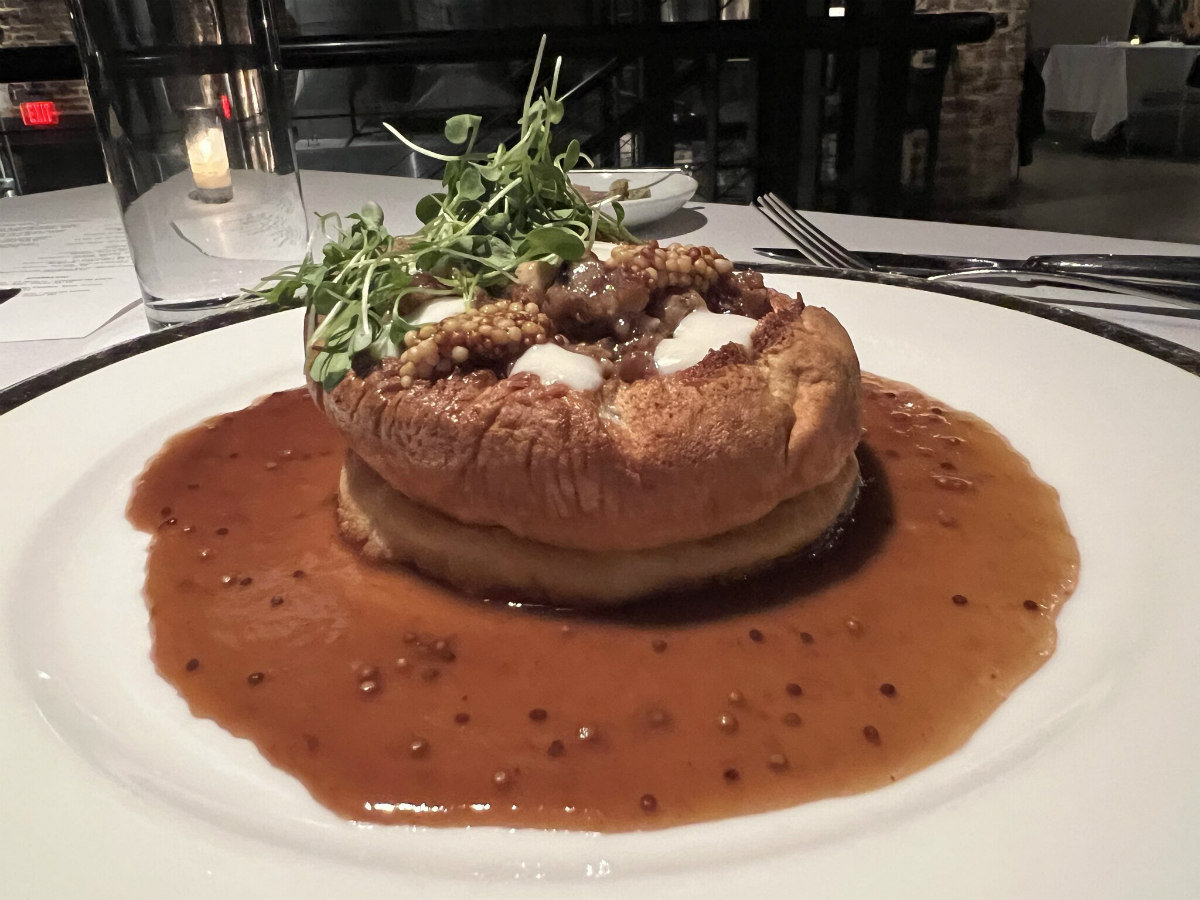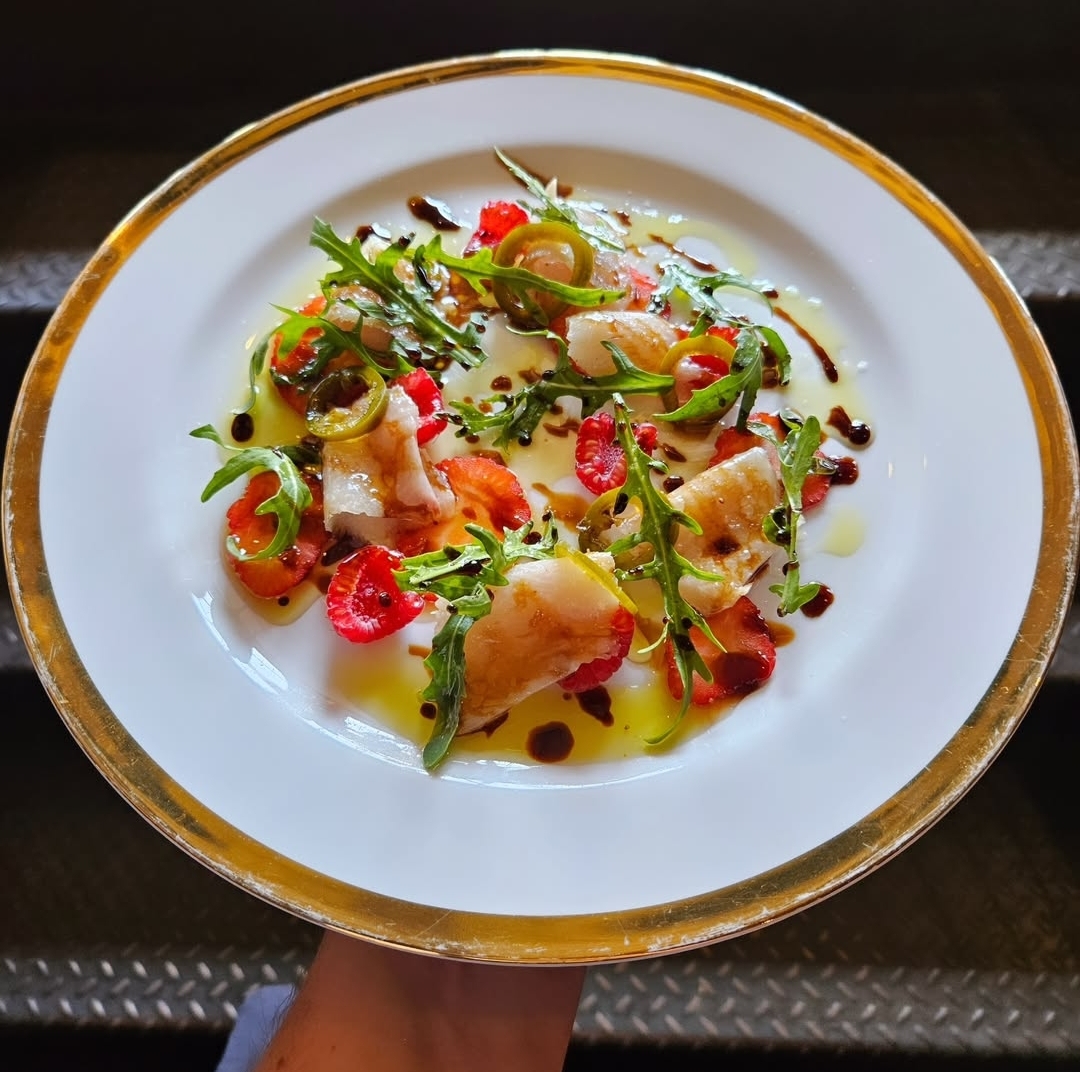It’s hard to believe that the last time I sat down to review what has become one of my favorite restaurants in Omaha — The Boiler Room — it was 2016.
So much has happened since then, to diners, to chefs and to the Omaha restaurant scene. But one thing, at least when it comes to this review, remains the same: Since 2009, when it opened its doors, The Boiler Room has been one of the city’s most forward-thinking, consistently good, truly creative restaurants that we’ve ever seen as a food loving city.
It remains that today.
In 2016, and again in 2020, when I had a memorable pandemic-times dinner on the restaurant’s patio, I had praise for chef Tim Nicholson, who took over the kitchen in 2013 from Chef Paul Kulik.
I praised the seafood and the fresh fish, the house-made bread and charcuterie and the experience I said you wouldn’t find anywhere else: Where else, in fact, have you ever been able to order a pig’s head terrine? And then there’s the top-notch craft cocktail bar, the gorgeous dining room and the exceptional service, friendly but knowledgeable, proper but still comfortable.
All that remains the same, except for the menu. Because while much of what makes it so great stays the same at Boiler, the menu never does.
I am still thinking about Nicholson’s Yorkshire pudding, which was on the first plates menu one night, and which I don’t recall ever seeing on a fine dining menu in Omaha in the last decade.
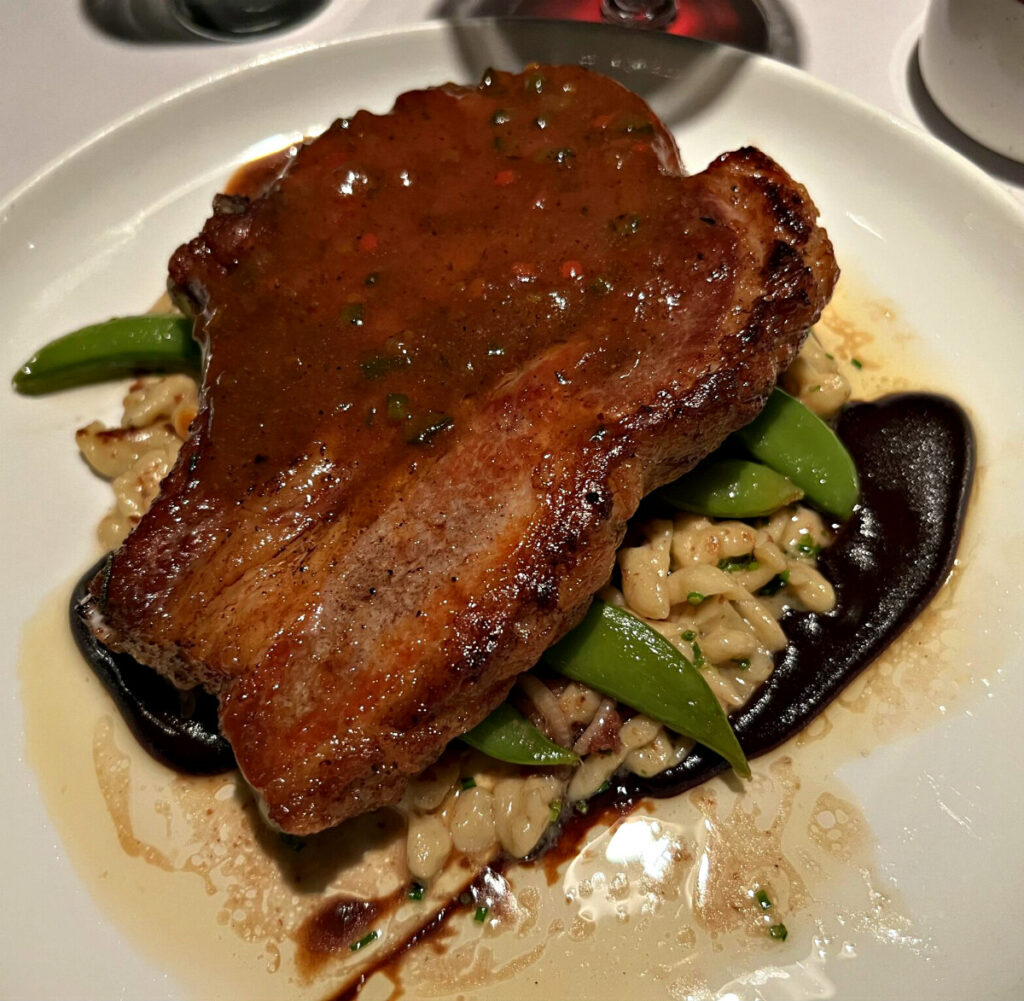
The pastry, which had risen tall, had a tender, just-chewy finish. Inside its bowl-like center was a rich, seasonal filing which I was shocked to realize didn’t contain any meat. Instead, it was made of dates, gorgonzola cheese and smoked pecan, topped with tangy pickled mustard seeds, a vegan aioli and a rich mushroom demi glaze.
Large enough to be a main course, and certainly filling enough to be one, the dish had the kind of savory flavor and wonderful execution that made it an original. If it comes back, I will surely order it again.
Pork from T.D. Niche, out of Elk Creek, Nebraska, is some of the best in the state, hands down, and has long been a staple on the Boiler Room’s menu. Here, Nicholson took a pork chop from one of the farm’s heritage Berkshire hogs and served it simply and seasonally, with a mustard-spiked spaetzle (a Nicholson signature at this point), a puree of apple and black garlic, crisp sugar snap peas and sauce piquant, a spicy, tomato based Cajun reduction.
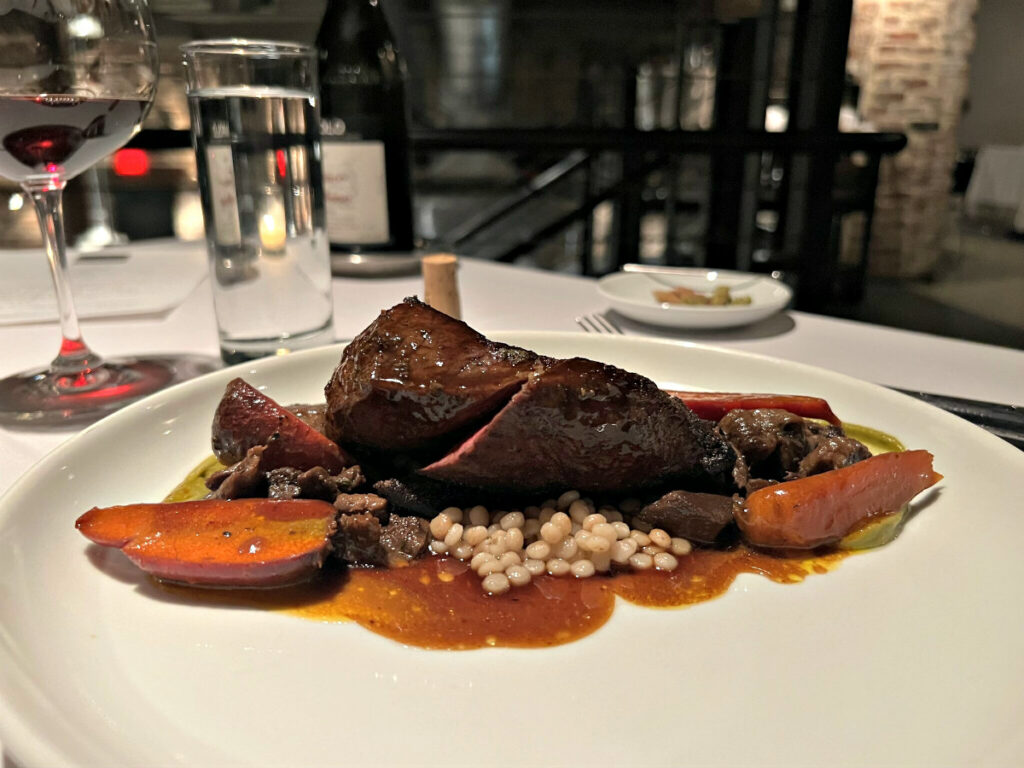
A piece of Morgan Ranch wagyu sirloin that same evening came served on a bed of toasted couscous with chunky roasted local carrots and mushrooms and a red romesco sauce made from poblano peppers and cashews.
Nicholson cooks protein to perfection. The beef arrived perfectly medium rare, the pork is always tender and juicy. And in my experience, the same goes for the fish on the Boiler Room’s menu, which is always flaky and light.
While the restaurant isn’t Italian, it knocks out some great homemade pastas, often with hearty bolognese or braised sugo sauces, which are just excellent.
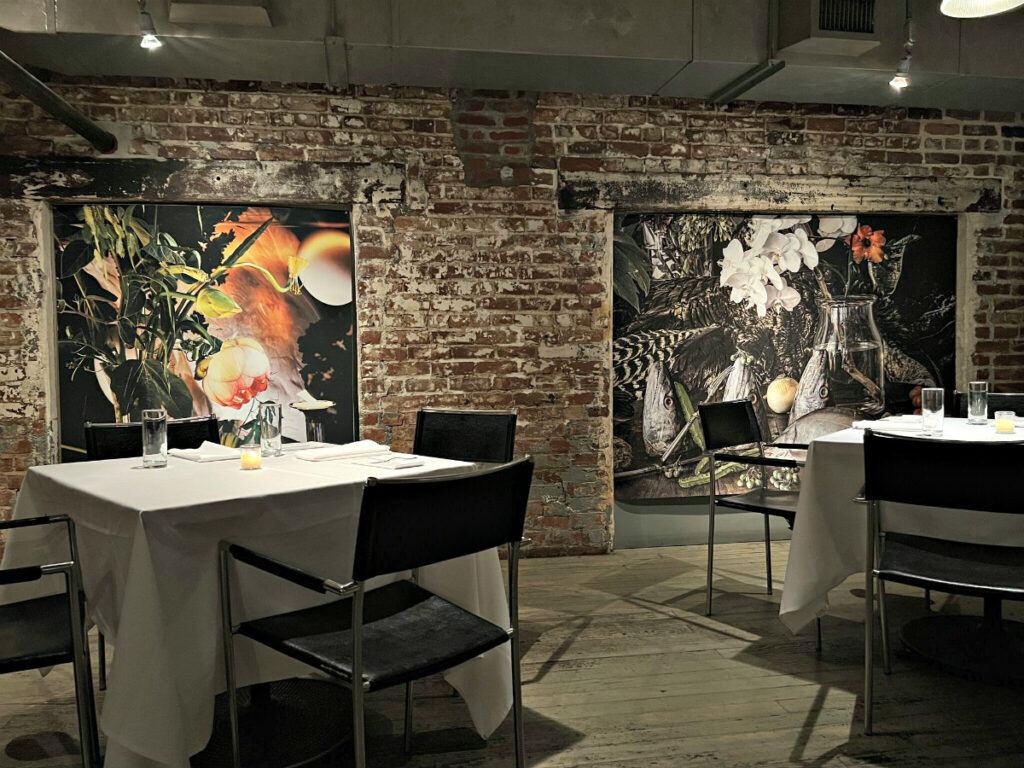
Service at the restaurant is top-notch. The staff hits the right note between formality and friendliness. Their level of comfort makes the diner feel comfortable, too.
It’s no shock that the Boiler Room is expensive, particularly if you add a bottle of wine from their excellent cellar, which we did one night. It’s easy for the bill to quickly rise above $300. That’s why another night, we grabbed two seats at the bar and decided to try a more informal take on the dining experience, focused on cocktails and shared plates. This is a more affordable (though, admittedly, still north of $100) and casual way to experience the restaurant; one that I have enjoyed before and would again.
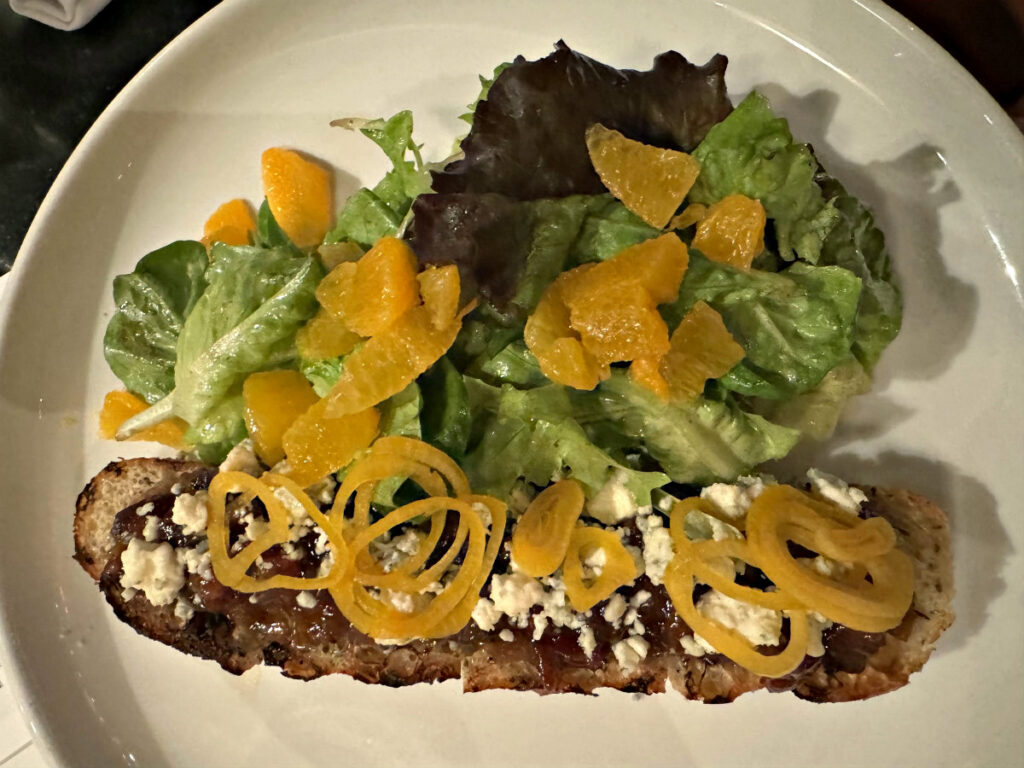
A simple, beautiful tartine, a sort of open faced, sliced sandwich, came served on tender homemade rosemary focaccia, topped with house bacon jam, gorgonzola cheese, small slices of orange, pickled shallots and a handful of local garden greens. Matthew said it was one of the favorite small bites he’d had at the restaurant perhaps ever; its balanced, tart-sweet tang, savory base and layered textures made it memorable.
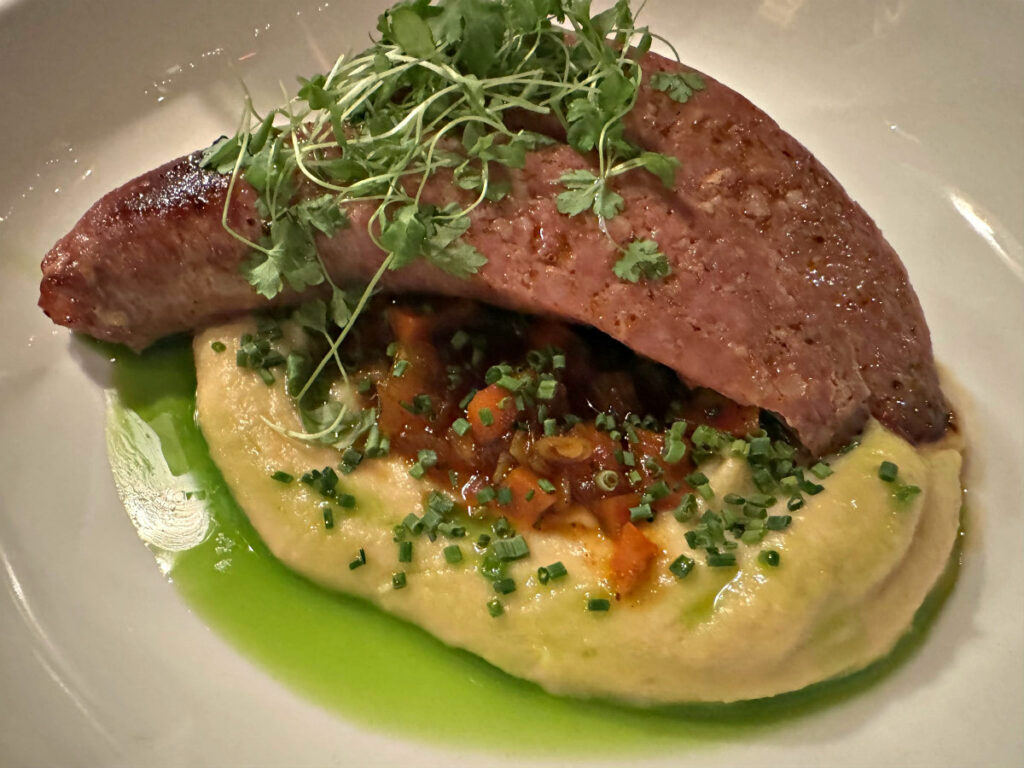
Another small plate, a delicious pork merguez sausage, came served with bright green herb oil, carrot chutney, creamy hummus and a sprinkle of microgreens. The dish is colorful, flavorful, rich and light at once, and if it is still on the menu, this hearty sausage is worth a try.
When paired with a cheese plate — always a treat with the Boiler Room’s crusty, hearty bread — those two small plates were sizable enough to make a meal. Often, I don’t recognize the cheeses on the list, but I aim for a soft, a medium and a hard cheese, and the staff always points a diner in the right direction. The candied nuts on the board are always a highlight.
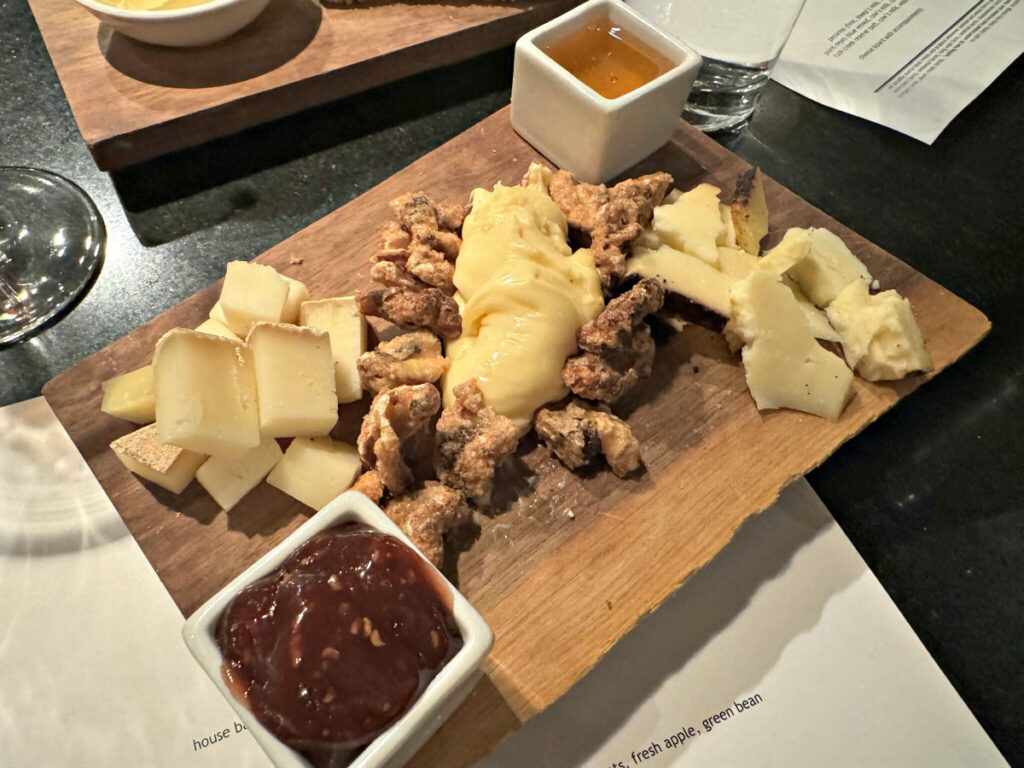
Cocktails are great at the Boiler Room. Seasonal and original, they change the list several times a year, and this time of year, at least one is always served hot. A seat at the bar gives a diner the best focal points: The door (to see who is coming in and out), the dramatic stairwell, and both the lower and upper level dining rooms. It’s fantastic for people watching — and don’t worry about looking around. Everyone does it.
In my past reviews, dessert was sometimes where The Boiler Room experience fell short. But these visits ended with tender, fluffy macarons, profiteroles, rich bon bon chocolates and an excellent, towering chocolate cake served with dramatic black and white chocolate spears and a smooth, creamy scoop of cookies and cream.
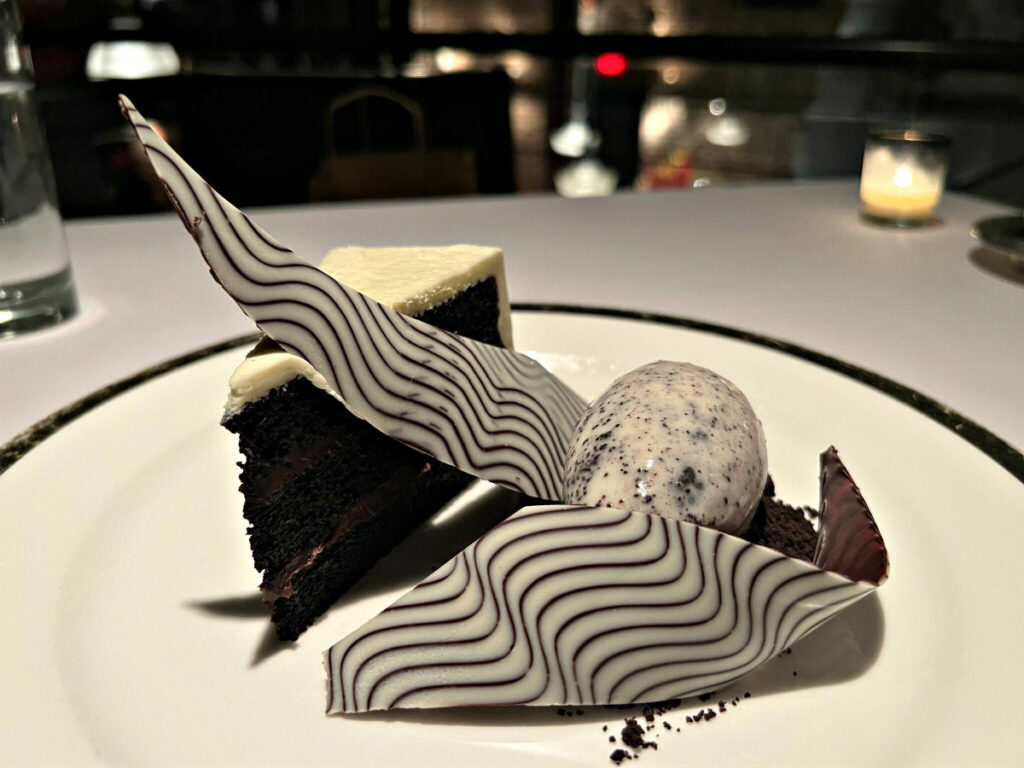
Some restaurants age better than others. The Boiler Room is one that does. Nicholson hasn’t ever lost sight of the upscale French concept the restaurant originated with, but he’s confidently made it his own during the past decade. It’s hard to hit the right balance between chic and cozy, fancy but hearty, new but familiar, and somehow, the restaurant executes that on each and every level: atmosphere, drinks, service and most of all, food.

